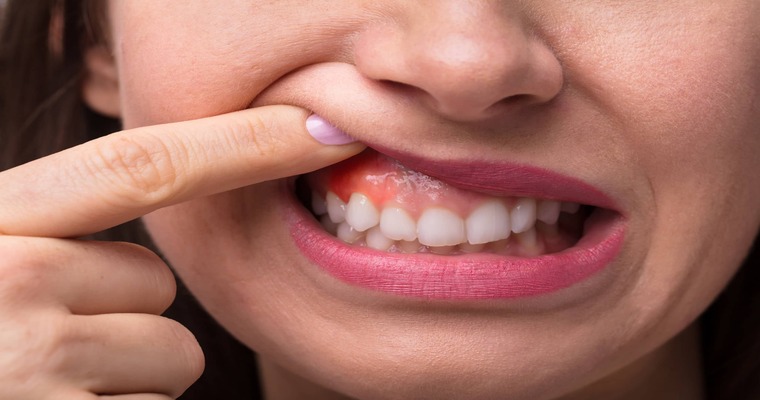
We often forget to consider oral health beyond just our teeth, but did you know that nearly half of all adults experience gum disease at some point in their lives? Gum or periodontal disease is a common dental problem affecting many people. If you ignore it, it can lead to serious problems. However, knowing the symptoms and taking action early can help protect your teeth and gums. This blog will explore five common gum disease symptoms and how to address them proactively.
1. Bleeding Gums
Gum bleeding when brushing or flossing teeth can be one of the initial indications of gum disease. If your gums bleed easily during brushing or flossing, it could signal the presence of accumulated bacteria, leading to irritation and inflammation.
What to Do: If you notice bleeding, don’t stop brushing or flossing. Instead, make sure you’re doing it gently but effectively. Schedule a dental checkup to ensure it’s not something more serious.
2. Red or Swollen Gums
Healthy gums are typically firm and pink. If your gums appear tender, red, or swollen, they indicate an underlying issue. Redness and swelling are early indications of gum disease or gingivitis. Plaque accumulation often causes swelling, which irritates the gum tissue.
What to Do: Maintain good oral hygiene by brushing twice a day and flossing daily. You can also use an antibacterial mouthwash. If the swelling doesn’t go away, visit your dentist.
3. Persistent Bad Breath
Bad breath, also known as halitosis, might indicate the presence of gum disease. Gum disease can lead to the formation of pockets in the gums, which can harbor bacteria that cause unpleasant odors. If brushing doesn't eliminate bad breath, it may be connected to issues with the gums.
What to Do: A dental appointment can help assess if gum disease is the underlying cause. A comprehensive gum cleaning can treat these clusters of bacteria.
4. Gum Recession
If your teeth look longer than usual or you notice your gums pulling away from your teeth, this could be gum recession. Receding gums expose the roots of the teeth, making them more vulnerable to decay and sensitivity.
What to Do: Use a soft-bristled toothbrush to avoid irritating your gums. If you have gum recession, your dentist may suggest treatments like scaling, root planing, and antibiotics to remove plaque and help your gums heal.
5. Loose Teeth
In advanced gum disease, the gums may start pulling away from the teeth, leading to loose or shifting teeth. This can affect your bite and overall oral health.
What to Do: If you notice any loose teeth, see your dentist right away. Early treatment can help save your teeth and prevent further damage.
How to Address Gum Disease Early
Detecting gum disease in its early stages is key to preventing serious problems. Here’s what you can do to address it early:
- Brush and Floss Daily: Clean your teeth thoroughly to prevent plaque buildup.
- Visit the Dentist Regularly: Regular checkups help catch problems early and keep your gums healthy.
- Eat a Healthy Diet: Foods rich in minerals and vitamins can strengthen your gums and teeth.
- Avoid Smoking: Smoking can make gum disease worse and slow down healing.
Gum disease can be serious, but it’s preventable if you catch it early. By watching for symptoms like bleeding gums, swelling, bad breath, gum recession, and loose teeth, you can keep your gums healthy by practicing good oral hygiene. If you’re ever in doubt, don’t hesitate to visit Dr Kalamkar'S Welldent Family Dental Care dental clinic in Sakkardara for gum disease or other dental problems. We are here to provide you with advice and the best possible treatments. It’s always better to be safe than sorry when it comes to your oral health!
